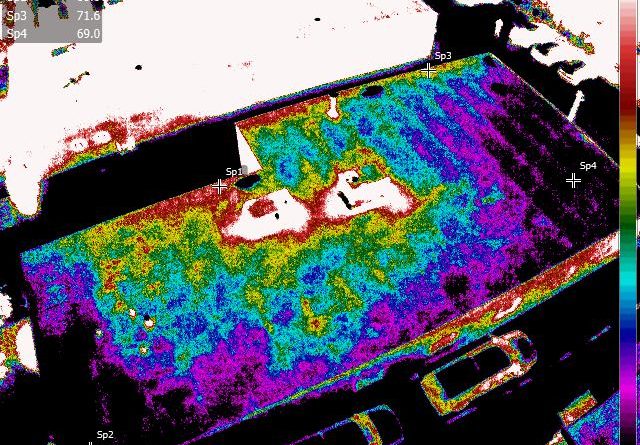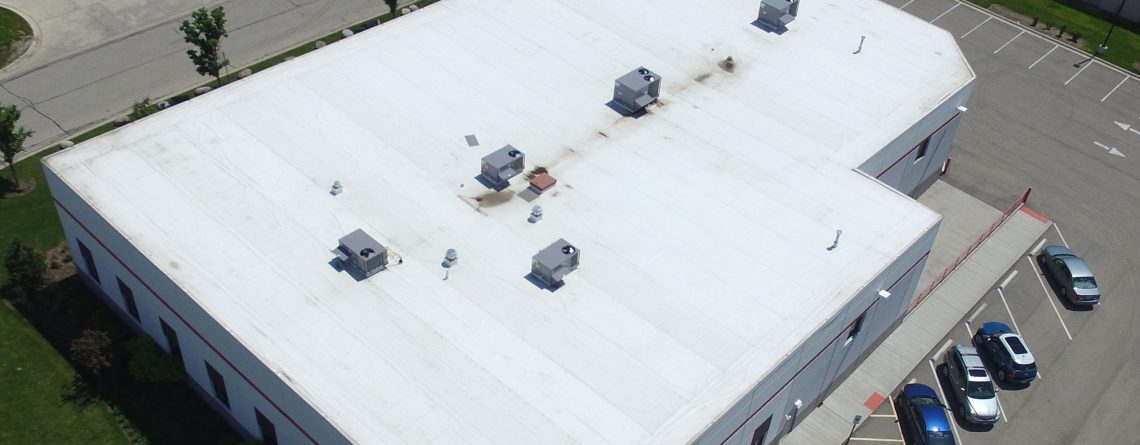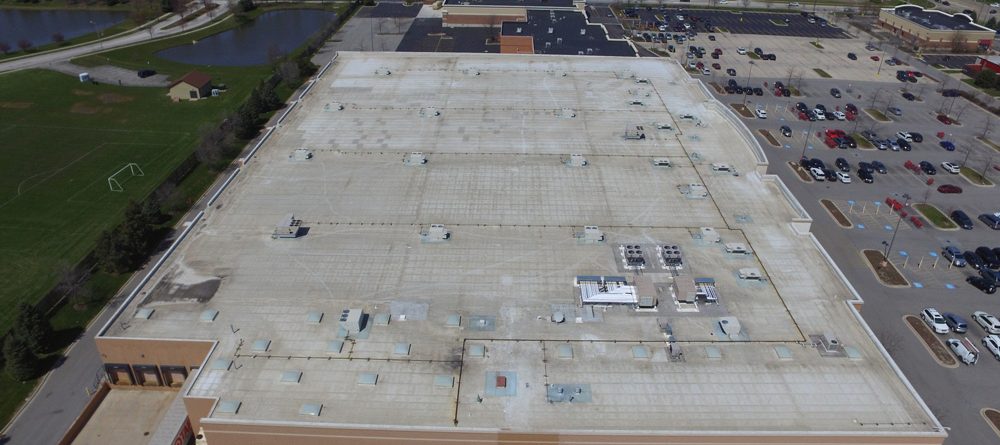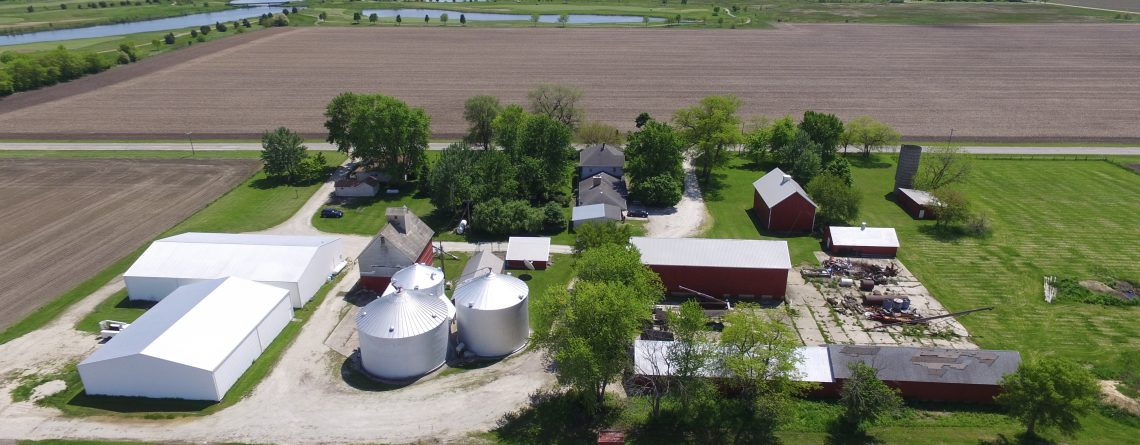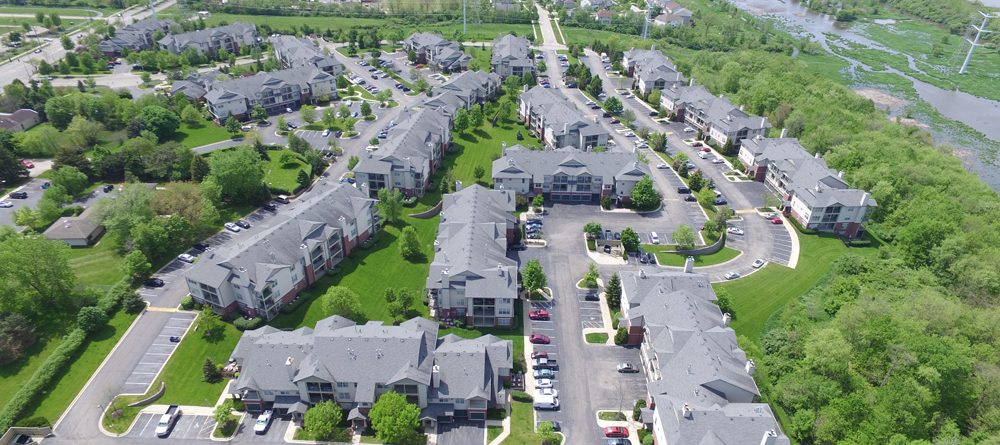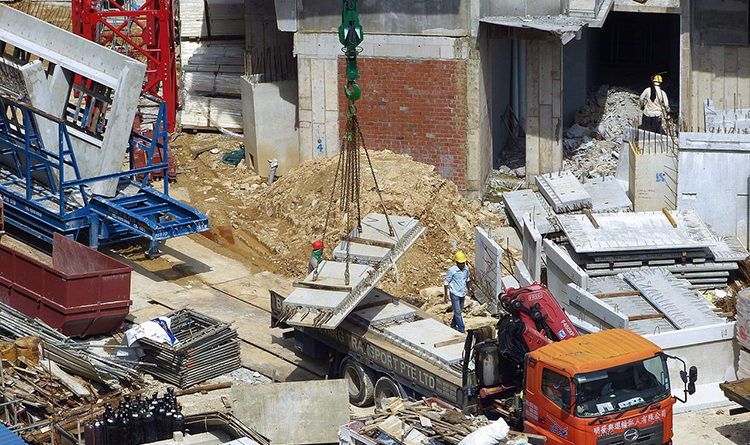ROOF SYSTEM X-RAY
Roof System x-ray (sort of read on)
A roof system x-ray or better known as an infrared of your roof system, performed with a drone, can be both cost-effective and eye-opening. The featured picture is an infrared of the below building. Drone Infrared Imaging flew about 80' off the ground to capture the below image. The pvc roof system has seen its better days. The roof is now dull and dingy. The black stained areas usually have to do with the lack of drainage on the system. A roof that has poor drainage does not mean those areas are leaking. In this example, it is revealed that it is opposite.
 What would a roof consultant say?
A roof consultant would probably recommend a complete tear off for this roof system. Good plan if the owner of the building could afford it. The infrared drone is just reading the moisture of the layer of insulation directly under the roof system. It can't read the other layer which is under the initial roof system and over the deck. The only way to know the moisture content in that layer would be to investigate leaks by doing a series of core samples.
Infrared Scan helps to provide economical roof system option
The roofing contractor removed the top layer of roofing. The infrared helped make this decision. The moisture did not penetrate the initial layer of insulation over the deck so they could leave that roof in place. This made it very affordable and something that the owner was willing to do. The requirements for roof insulation are very high. Roof insulation is now the highest component of the roof system. A recovery board was installed instead of all the different layers of insulation which saved money. There was a labor saving by not tearing off the bottom roof. As a result, a building owner was happy!
What would a roof consultant say?
A roof consultant would probably recommend a complete tear off for this roof system. Good plan if the owner of the building could afford it. The infrared drone is just reading the moisture of the layer of insulation directly under the roof system. It can't read the other layer which is under the initial roof system and over the deck. The only way to know the moisture content in that layer would be to investigate leaks by doing a series of core samples.
Infrared Scan helps to provide economical roof system option
The roofing contractor removed the top layer of roofing. The infrared helped make this decision. The moisture did not penetrate the initial layer of insulation over the deck so they could leave that roof in place. This made it very affordable and something that the owner was willing to do. The requirements for roof insulation are very high. Roof insulation is now the highest component of the roof system. A recovery board was installed instead of all the different layers of insulation which saved money. There was a labor saving by not tearing off the bottom roof. As a result, a building owner was happy!
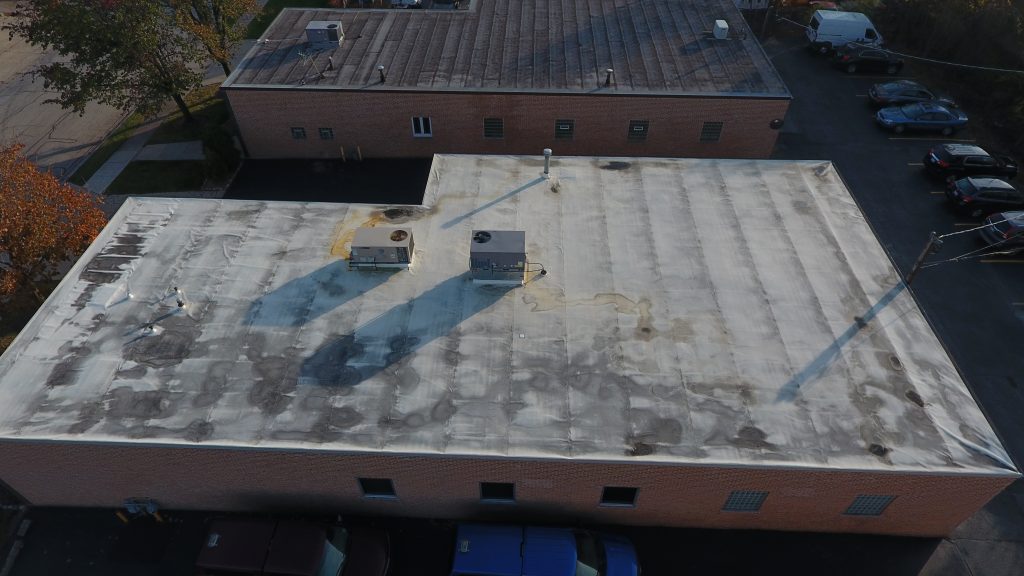 What would a roof consultant say?
A roof consultant would probably recommend a complete tear off for this roof system. Good plan if the owner of the building could afford it. The infrared drone is just reading the moisture of the layer of insulation directly under the roof system. It can't read the other layer which is under the initial roof system and over the deck. The only way to know the moisture content in that layer would be to investigate leaks by doing a series of core samples.
Infrared Scan helps to provide economical roof system option
The roofing contractor removed the top layer of roofing. The infrared helped make this decision. The moisture did not penetrate the initial layer of insulation over the deck so they could leave that roof in place. This made it very affordable and something that the owner was willing to do. The requirements for roof insulation are very high. Roof insulation is now the highest component of the roof system. A recovery board was installed instead of all the different layers of insulation which saved money. There was a labor saving by not tearing off the bottom roof. As a result, a building owner was happy!
What would a roof consultant say?
A roof consultant would probably recommend a complete tear off for this roof system. Good plan if the owner of the building could afford it. The infrared drone is just reading the moisture of the layer of insulation directly under the roof system. It can't read the other layer which is under the initial roof system and over the deck. The only way to know the moisture content in that layer would be to investigate leaks by doing a series of core samples.
Infrared Scan helps to provide economical roof system option
The roofing contractor removed the top layer of roofing. The infrared helped make this decision. The moisture did not penetrate the initial layer of insulation over the deck so they could leave that roof in place. This made it very affordable and something that the owner was willing to do. The requirements for roof insulation are very high. Roof insulation is now the highest component of the roof system. A recovery board was installed instead of all the different layers of insulation which saved money. There was a labor saving by not tearing off the bottom roof. As a result, a building owner was happy!
